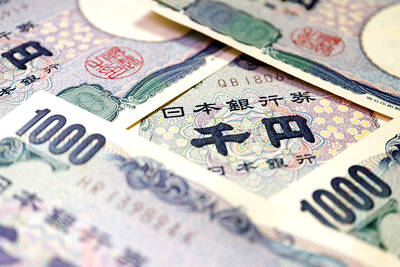Headrest canopies and fabric barriers between seats could start appearing in airplane cabins as the embattled industry tries to ward off the COVID-19 pandemic.
Airlines desperate for governments to lift travel restrictions and passengers to return are looking at ways to reassure the public that their health would not be compromised on a flight. New-look seats and fresh cabins could be a start.
One of the biggest companies in that business, Recaro Aircraft Seating GmbH, has designed a range of modifications to keep passengers apart and protect them from infection.
Airlines are considering installing Recaro’s equipment as temporary cabin makeovers, Recaro CEO Mark Hiller said in an interview.
They need fittings that are easy to maneuver, lightweight and available at short notice, he said.
“There is definitely large interest from across the different regions,” he said.
With a COVID-10 vaccine possibly years away, airlines need to persuade the public it is safe to fly when an infected passenger might be next to them.
Sporadic flareups around the world are putting people off: Global traffic in July was down almost 80 percent from a year earlier, a steeper-than-expected slump, the International Air Transport Association said last week.
Of the planes that are flying, many are half empty. Aircraft typically must be 70 percent to 80 percent full to turn a profit, so that increases the appeal of devices that let passengers sit side by side without touching heads, brushing shoulders or nudging elbows.
Airlines are also figuring out how to apply a disinfectant coating developed by Recaro onto their seats, Hiller said. The German company said it has revamped the substance to repel viruses, including COVID-19.
While the industry has for months said there is little chance of catching the virus on a plane because there are hospital-grade air filters on board, that argument has been undermined by breakouts on some flights.
All 187 passengers and six crew on a TUI AG flight from the Greek resort of Zante to Cardiff, Wales, last month were asked to self-isolate after at least 16 confirmed cases were identified on the Aug. 25 service.
Recaro, which sold about 150,000 aircraft seats last year, is not immune to the crisis gripping the aviation industry, despite potential demand for its designs.
Hiller said revenue is expected to fall almost 60 percent this year.
“Even if airlines aren’t going to buy new planes, they might go for new cabins that are more comfortable or adapted to COVID,” he said.

AI TALENT: No financial details were released about the deal, in which top Groq executives, including its CEO, would join Nvidia to help advance the technology Nvidia Corp has agreed to a licensing deal with artificial intelligence (AI) start-up Groq, furthering its investments in companies connected to the AI boom and gaining the right to add a new type of technology to its products. The world’s largest publicly traded company has paid for the right to use Groq’s technology and is to integrate its chip design into future products. Some of the start-up’s executives are leaving to join Nvidia to help with that effort, the companies said. Groq would continue as an independent company with a new chief executive, it said on Wednesday in a post on its Web

RESPONSE: The Japanese Ministry of Finance might have to intervene in the currency markets should the yen keep weakening toward the 160 level against the US dollar Japan’s chief currency official yesterday sent a warning on recent foreign exchange moves, after the yen weakened against the US dollar following Friday last week’s Bank of Japan (BOJ) decision. “We’re seeing one-directional, sudden moves especially after last week’s monetary policy meeting, so I’m deeply concerned,” Japanese Vice Finance Minister for International Affairs Atsushi Mimura told reporters. “We’d like to take appropriate responses against excessive moves.” The central bank on Friday raised its benchmark interest rate to the highest in 30 years, but Bank of Japan Governor Kazuo Ueda chose to keep his options open rather than bolster the yen,

Even as the US is embarked on a bitter rivalry with China over the deployment of artificial intelligence (AI), Chinese technology is quietly making inroads into the US market. Despite considerable geopolitical tensions, Chinese open-source AI models are winning over a growing number of programmers and companies in the US. These are different from the closed generative AI models that have become household names — ChatGPT-maker OpenAI or Google’s Gemini — whose inner workings are fiercely protected. In contrast, “open” models offered by many Chinese rivals, from Alibaba (阿里巴巴) to DeepSeek (深度求索), allow programmers to customize parts of the software to suit their

Global server shipments are expected to surge to 15 million units next year, from 4 million units this year, with artificial intelligence (AI) servers accounting for about 30 percent, driven by massive capital spending by major cloud service providers, the Market Intelligence and Consulting Institute (MIC) said on Thursday last week. Major cloud service providers — including Google’s parent company Alphabet Inc, Microsoft Corp, Amazon.com Inc and Meta Platforms Inc — are projected to budget US$450 million for capital expenditure next year, up from US$400 million this year, MIC ICT [information and communications technology] Industry Research Center director Edward Lin